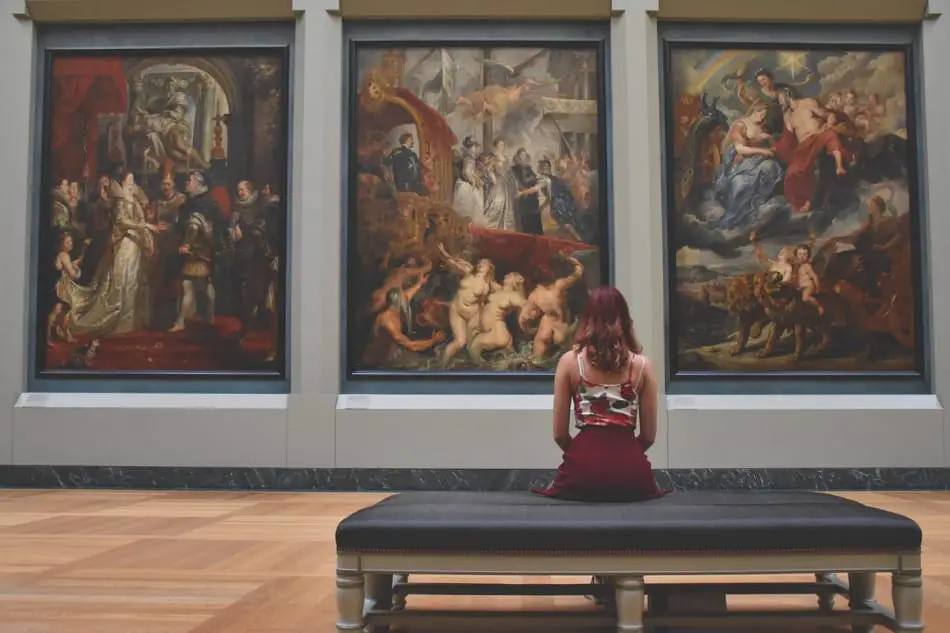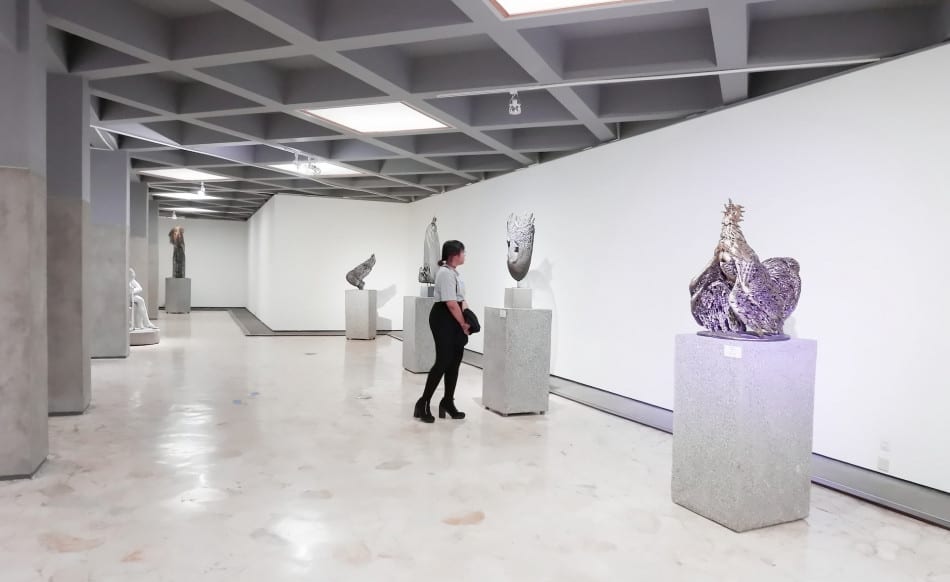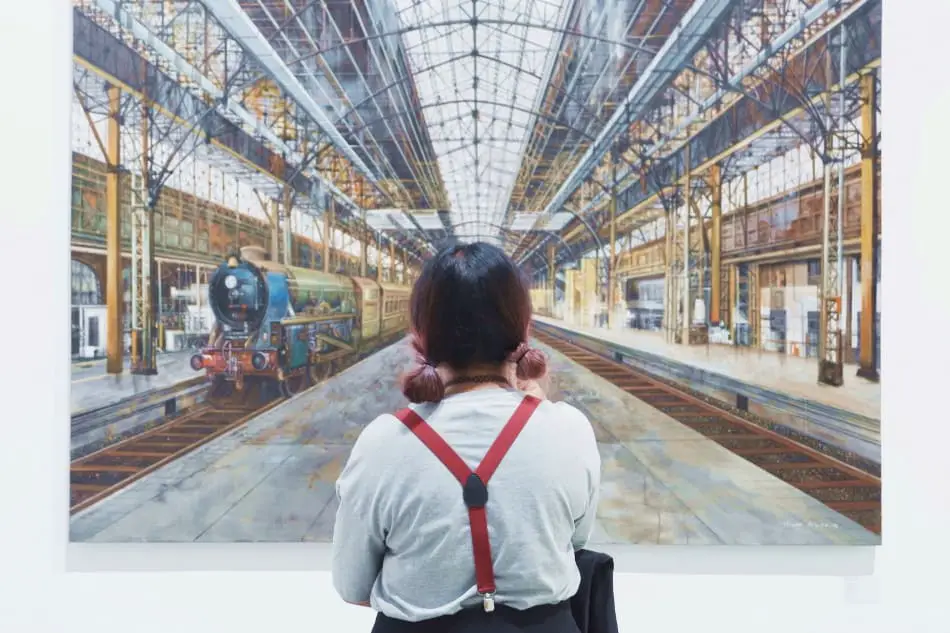There’s more to Art History than learning about works of Artists and Art; it can help you discover a lot about World History and human society while finding a perfect balance between the past and present- in other words.
Art History is the intersection between the past and present.
To study Art History on your own, you need to first develop an interest in Art History and then proceed to get Art History resources. With the acquired resources, work backward – find something worthy of interest in the modern times and dig deeper by finding their influence and background.
So many people have complained about Art History being tedious and difficult to learn due to the presence of many dates, tricky to learn names, and places.
The thought of learning it all alone is even scarier, but not to worry, this guide has all you need to make it work seamlessly.
5 Steps to Studying Art History on Your Own
As stated earlier, we’ll be intimating you on the steps to making studying Art History on your own super easy like ABC.
Remember that Art History is taught separately from the studio or Fine Art.
-> Read Also What Is An Autodidact?
Step 1: Develop an Interest

The first and the most critical step to perfectly learning History on your own is to awaken your interest in the subject.
Channeling your interest helps you assimilate faster and grasp seemingly tricky aspects of your topic even without the presence of your teacher around you.
Art History is vast and cut across numerous timelines of History. This can make studying this subject seem a bit tasking, but with the right attitude, studying it on your terms wouldn’t be a problem.
You can pick a theme and focus on it for a start to help build consistency and concentration.
Here are a few sources you can checkout to put you on the right path:
Step 2: Source for Art History Resources
Both hard and soft copies of Art History resources must be at your beck and call to aid easy study.
We highly recommend that you consult smartHistory, an online non-profit platform that has grown in reach and numbers due to the contribution from different professors of Arts and History.
On smartHistory, you’ll find tangible information from the least to the most major artifact or even contemporary creations.
It’s one of the most extensive History e-libraries in the world today; an extra advantage is that it takes away the stress of bulky textbooks.
The Lonely Palette is a podcast about Art History in which the podcaster goes into different major museums and examines, studies and breaks down every little detail about art pieces.
Check out the Art section at Khan Academy for additional information on Art History for free.
The Metropolitan Museum of Art is also an excellent platform for learning about retro art pieces, including painting, textiles, and sculptures. It’ll even interest you that they hold a fashion exhibition annually to bring awareness to art pieces and gather donations.
Read up about the Met Gala here: https://en.wikipedia.org/wiki/Met_Gala
Here’s a list of Art History books perfect for self-studying
- Art Through the Ages by Helen Gardner
- The Story of Art by H. Gombrich
- Theories of Modern Art by B. Chipp
- Art History and Its Method by Eric Fernie
- Teach Yourself Art History by Grant Pooke and Graham Whitham
Step 3: Work Backwards
Let’s say you find a contemporary piece of art that catches your fancy in a museum or a textbook. You must work your way backward to learn about the inspiration behind the creation of that piece- like a seed growing into a tree.
Many contemporary artists are inspired by other famous Artists, phenomena, techniques, and personal experiences to create things.
The 2020 Rolling Stone cover by Kadir Nelson of a black woman and a young boy leading people to freedom was inspired by the Eugene Delacroix painting of liberty in 1830, marking the July Revolution.
These examples bolster the claim that Art History is interwoven and all-encompassing, from leisure to revolution and other socio-political and socio-economic factors.
A Shot in the Cabaret film 1972 imitates the exact pose and mannerism of Journalist Sylvia Von Harden Otto Dix in 1926. They both visibly hold a stick of cigar burning halfway with striking layered haircuts.
Step 4: Widen Your Horizon

Restricting yourself to one theme, movement, or timeline of Art History can wear you out, get boring and make you lose concentration.
We advise that you widen your scope to keep your thirst intact and sharpen your interest from time to time.
You might eventually pique interest in an entirely different theme from the only one you’ve explored.
So, get to work and study away! Here’s a read on the various themes of Art History.
http://www.vwArtHistory.com/study.html
Step 5: Use Art Prompts
Art prompts are a series of short exercises that help the brain to refresh and revise on whatever you may have studied before without necessarily having to sit for an exam or a classroom text – you’re doing it on your own with zero external supervision.
Compare and Contrast
One example of Art prompts is comparing and contrasting, which involves taking two similar artworks, either life or drawing/painting, and then looking for similarities and differences in technique, texture, theme, shape, and tones.
Sketch it!
Another type of art prompts involves making a collage or sketchbook- a more personal and straightforward study approach. Apart from the fact that you can easily carry it around, it also helps you properly arrange your materials according to your desire.
Find out what you like about each Artist and include those outstanding attributes in your sketchbook to constantly remind you and create mental bonds- the fonder you become of something, the faster you learn about them.
You can get images for your collage by printing out images online and attaching them to your sketchbook for keeps and studying.
Additional Tips on How to Study Art History on Your Own

You don’t stop at the steps listed above. We’ve taken it further by helping you with valuable tips that can make the learning experience more accessible and faster.
The golden rule to self-studying is that you do everything on your terms. Since you’re not in the classroom walls or under the auspices of the teacher, take your time and be open-minded.
1. Get Verified Resources
Used books and soft copies are a great and affordable way to get study materials. You can also go online and check out dozens of websites with Art History resources.
Here’re links to some more materials
2. Outsource
You should never stick to one style of learning when self-studying. The single resource will not serve the purpose; you must sample different perspectives to get the idea, as dates and facts can sometimes be vague.
3. Join an Online Forum

You need people with like minds and similar purposes around you to stay focused, be it on task or something entirely outside the scope of the study.
Look for an online group discussion platform where you can ask questions about areas you may not understand, borrow materials, and generally trade ideas.
Here are links to some notable online art history forums
- https://medievalartresearch.com/2020/04/02/medieval-art-history-resource-facebook-group/
- https://www.reddit.com/r/ArtHistory/comments/ef5iox/join_the_rarthistory_official_art_history_discord/
- https://web.facebook.com/groups/266352464695042/
- https://web.facebook.com/groups/Archaeology.Prehistoric/
4. Sticky Notes
Keep sticky notes handy; by the bed, on the shelf, or in your notebook, you can scribble notes like dates, names, or memorable one-liners (make sure you write them in your own words for easy understanding).
Sticky notes help you stay mentally alert and subconsciously stay in the learning mode.
5. Take Practice Exams/Tests
Since you’re alone, that shouldn’t stop you from taking tests and exams to measure your performance.
We suggest you do these tests frequently to improve your time in answering questions, construction, accuracy, and precision.
Click on the links below to have a go at some of these tests and quizzes
- https://arthistoryproject.com/quizzes/
- https://www.beano.com/posts/art-history-quiz
- https://www.jetpunk.com/tags/art-history
You can get sample questions from the college board or practice test resources like Barron’s AP Art History Prep book. Check this link to purchase yours.
https://www.amazon.com/Barrons-AP-Art-History-3rd/dp/1438004931
Have a friend or a family member review your answers when you’re done. This will help you make corrections where needed.
6. Take Virtual Tours of Museums and Art Galleries
You don’t need to consider ticket prices or the long queues for this one. All you need is a computer that’ll help you get a brilliant view of these museums while you do your virtual tour.
Make sure to read every information provided on each work. Here’s a link to some virtual tours.
- https://www.theguardian.com/travel/2020/mar/23/10-of-the-worlds-best-virtual-museum-and-Art-gallery-tours
- https://www.moma.org/research-and-learning/
-> Learn more about the 7 best websites for self-learning
Why Should You Study Art History?
For years, this has been the question on the lips of many, especially the faction of students/people who believe that History is difficult to learn, and adding art to the mix makes it much more complicated; watch us demystify these claims in less than four paragraphs.
Art History allows you to reflect deeply and address Art and History from various perspectives. With Art History, you get the best of the visual and literal world to interpret works of art from different eras and individuals perfectly.
The subject lets you go beyond scratching the surface and discover a new world filled with artworks and actual artists that are unheard, unpopular, and unseen but possess a fascinating gallery of experience and executions.
The perfect union between elements of literature, language, geography, philosophy, travel, education, and even science and Art History is recommended for everyone.
What Are Possible Career Paths in Art History

Yes, you can become gainfully employed after self-studying Art History because it’s such an important profession, especially in a world that has become so Art conscious. Here’re ten types of jobs an Art History graduate can take up.
| S/N | Career | Description | Average Salary Per Annum |
| 1 | An Art Curator | As an art curator you collect, store and display artifacts, memorabilia, digital and written files, and a range of artworks for exhibition in museums, art libraries, shops, and other Art-related establishments. | Art curators earn an average of $55,337 a year, according to ziprecruiter.com. |
| 2 | A Museum Director/Admin Officer | Museum directors have vast experience in History and Art which enables them to effectively run and manage museums. | A Museum director makes about $84,225 per year, according to indeed.com |
| 3 | Art Restorer and Conservators | Conservators are solely responsible for ensuring that an artifact stays in a clean, chaste state, void of human contact or any third-party influence that can ruin its value. | The average salary for Art Conservators in the United States is about $50,430, according to ziprecruiter.com |
| 4 | Art History Teachers | Another promising career after studying Art History is to take on the role of instilling the same knowledge you’ve gathered over the years to a newer set. | According to ziprecruiter.com, the average annual salary for an Art teacher in America is $46,507 per year |
| 5 | Art Authenticators | Since the theft rate of artifacts and old artworks are at an all-time high, art authenticators are necessary.An art authenticator must conduct quantitative research about the origin of the art (i.e., tracing the ownership as far as they can). | According to facts from ziprecruiter.com, the average salary for Art authenticators per annum adds up to about $90, 218 |
| 6 | Retail Manager/ Museum Reproductions | A role in museum reproduction usually involves managing retail and deciding on the possible reproduction of the museum Artworks, which the museum can put up for sale. | Museum retail managers earn up to $47,339 per annum, according to comparably.com |
| 7 | Art Librarian and Visual Resource Curator | These people are saddled with the responsibility of documenting, retrieving and cataloging visual art resources for educational outfits, libraries, and various non-profit organizations scattered across the USA.We advise that you may also get an additional degree or diploma in library science with your Art History qualification to boost your chances. | The basic annual pay for an Art Librarian in the U.S is about $54,756 a year, breaking it down to about $4,563 per month, according to ziprecruiter.com |
| 8 | Auctioneer | An Art historian will perform excellently as a representative on behalf of an art seller. With your broad knowledge of everything art, it’s pretty easy to describe artwork excitingly and enticingly while educating the seller excellently- an all-in-one package, you may say. | The salary for an Art auctioneer ranges from $50,737 to $63,991 and is confirmed to be $57,132 as of June 2022 by salary.com |
| 9 | Art Publisher | Different publishing outfits, both commercial, private, and academic houses, employ art professionals from different fields like writing, editing, graphics, and History to help them curate data and books. | The average salary for Art publishers is about $59,163 per annum, according to ziprecruiters.com |
| 10 | Tour Guides | This particular one is exciting and almost necessary in any historic site or art museum (this means you’re in high demand).Tour guides lead people/tourists through locations that hold cultural or historical significance and explain the art/historical context while at it. | Tour Guides earn an average of $30,490 per annum in the United States, according to bestcolleges.com. |
Tip: We advise art historians looking to pursue a career in the field to find a niche and develop themselves in it. This is necessary to prepare them for job opportunities tailored to their specific area.
It makes getting a job more manageable and aids the seamless execution of tasks with optimum results.
So, if you plan to manage a museum later in the future, we advise that you take courses in Museum studies and significant in them too.
Frequently Asked Questions (FAQs)

Q: What do we call those that study Art History?
Those who study Art History are regarded everywhere as Art Historians. Art historians observe closely and carefully analyze pieces of evidence to link them and come to a stable conclusion.
Q: What is the relationship between Art History and Society?
One theme is constant in this article, and it’s the interdependence of Art, History, and Society. You can’t talk about one without bringing in the other.
The role of Art in History and society is that it serves as the channel/vessel to portray thoughts, stories, and events that have helped shape human endeavors over the years.
For example: the Guernica by Pablo Picasso (1937) helped tell a story and bring rapt attention to the Spanish civil war; in contemporary times, people can still refer to Guernica and understand the back story.
Without Art History, you may still be remarkably uninformed about some integral and essential parts of human societal development and the events that have led us to where we are now.
-> Learn More about Self-Learning vs. Classroom Learning: Which Is Better?
Final Thoughts
Imagine traveling between time, periods, centuries, and countries (that’s what Art History affords you) in the comfort of your home and doing it on your terms; if you think it’s impossible, well, think again.
Far from the typical stereotype that learning and studying Art History can be very demanding, we know this mind-blowing Article has convinced you and cleared all your doubts about the rumors.
Take all the steps above to heart, and in no time, you’ll become a pro in Arts, and everything Art History has to offer all by yourself.
Reference
- https://www.makeuseof.com/tag/3-great-websites-learn-art-history/
- https://www.uopeople.edu/blog/why-study-art-history/
- https://www.thoughtco.com/top-tips-for-art-history-students-182929
- https://www.metmuseum.org/join-and-give/membership?utm_source=google&utm_medium=cpc&utm_campaign=&utm_term=met%20museum&utm_content=39536&mkwid=s&pcrid=510692668222&pmt=e&pkw=met%20museum&pdv=c&slid=&product=&gclid=CjwKCAjwoMSWBhAdEiwAVJ2ndmvkMJw8ZA49EiqRpF58W1dj3yeoPhHky1yy2eOL4gwCGLLp6vtMbxoCFk0QAvD_BwE
- https://www.artnews.com/art-news/product-recommendations/essential-art-history-books-1234580813/






